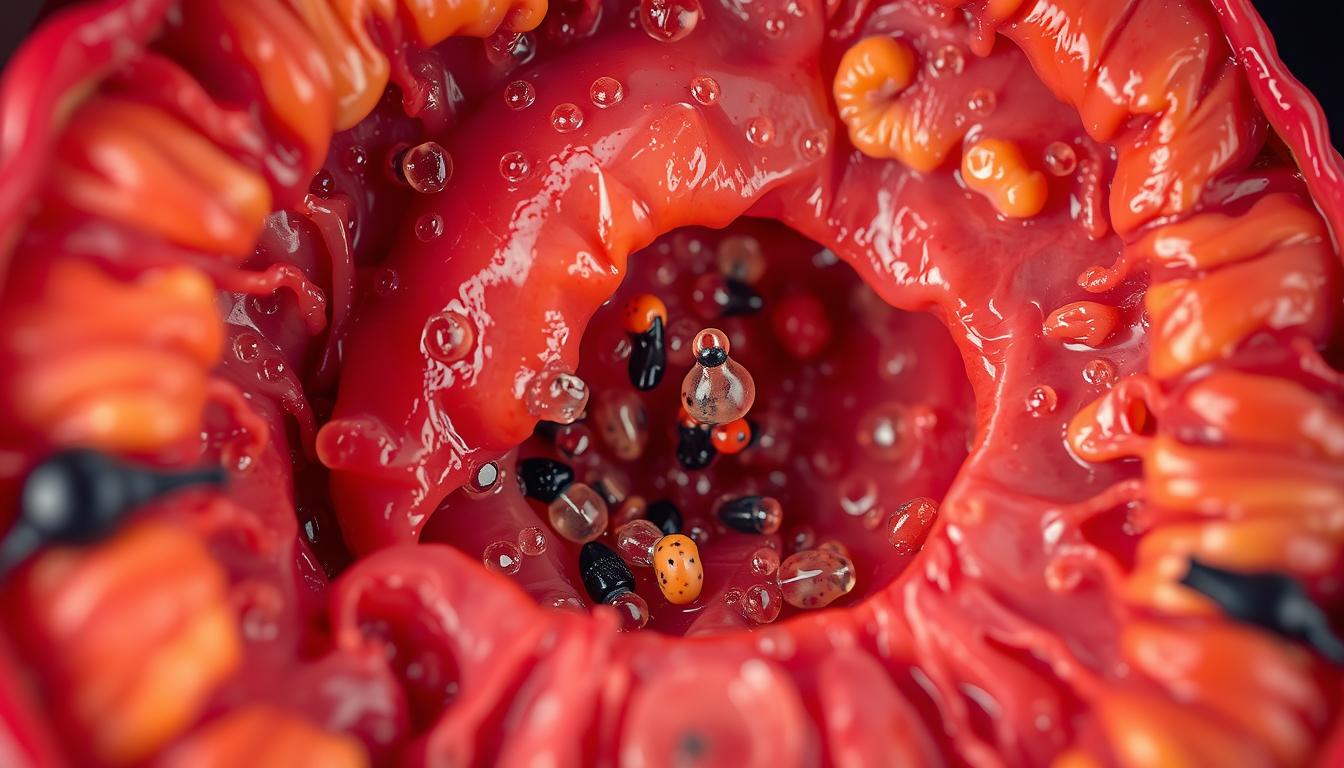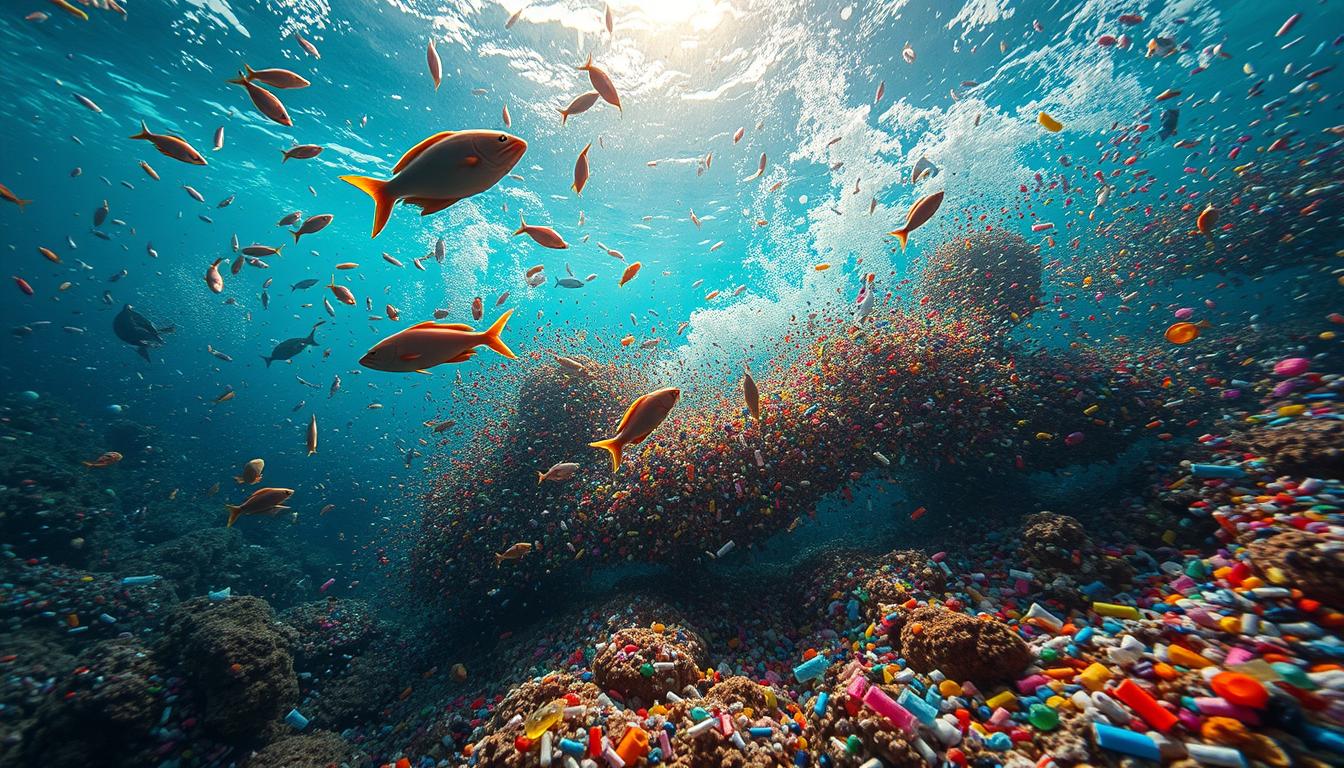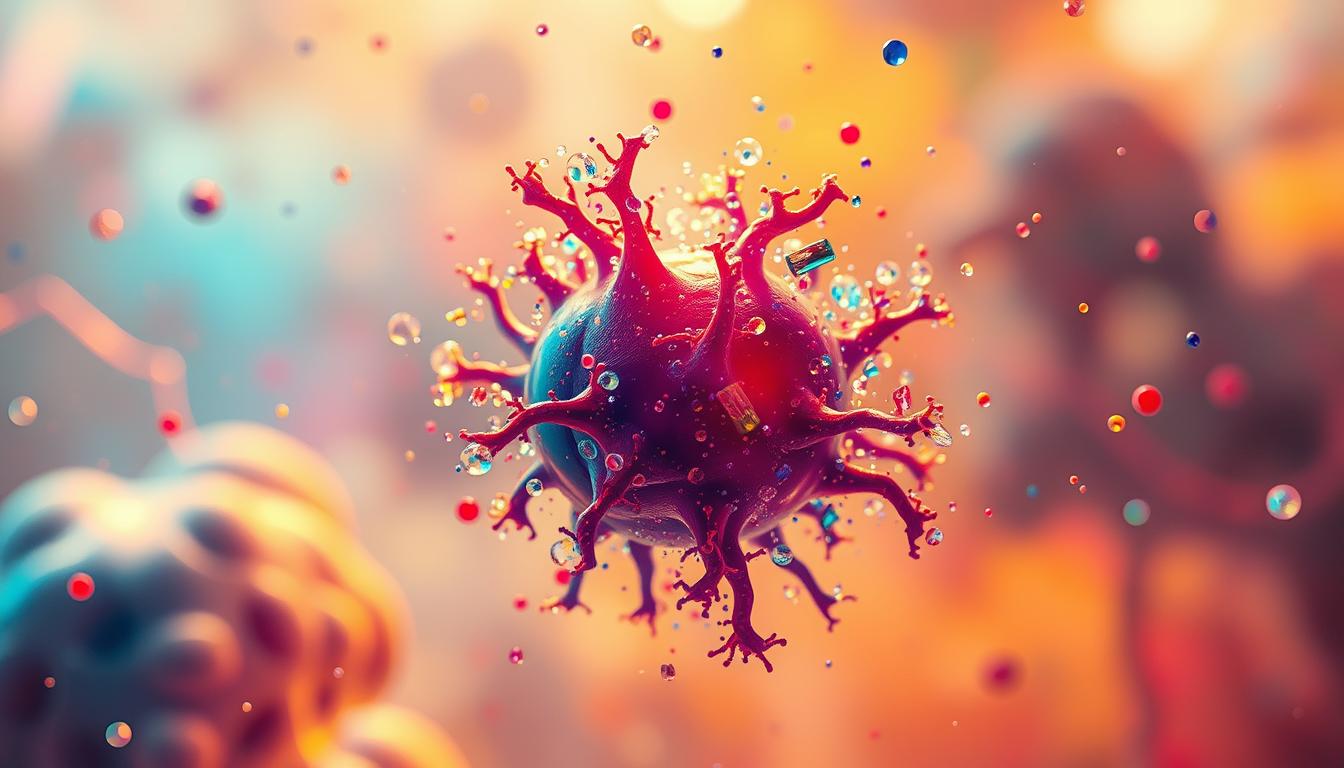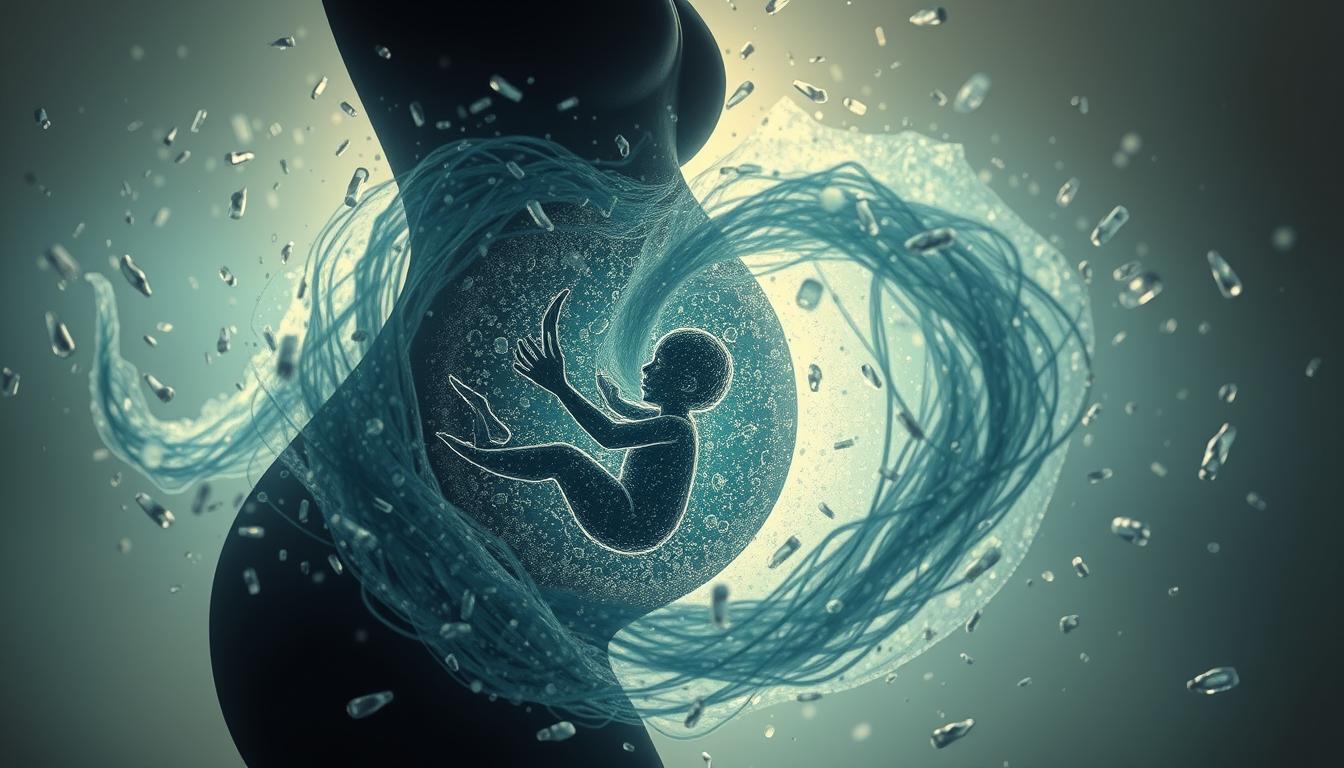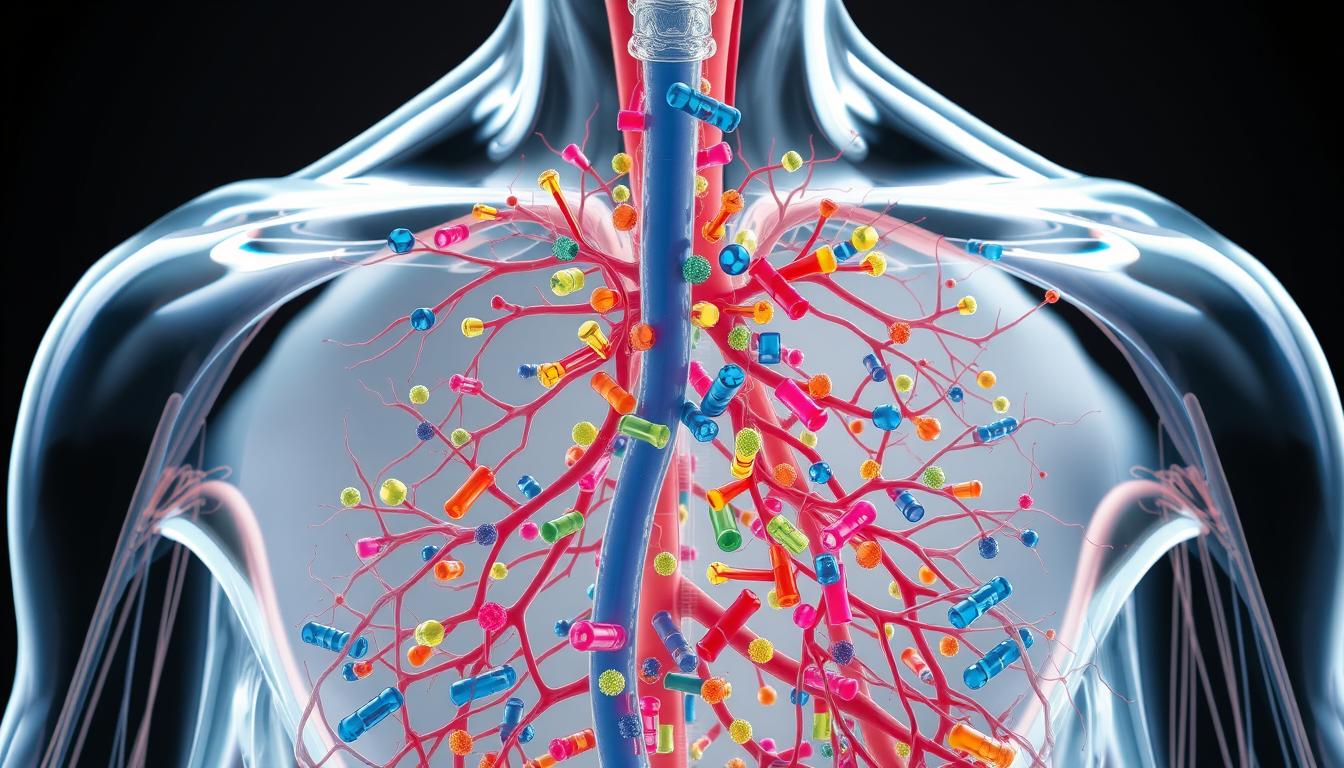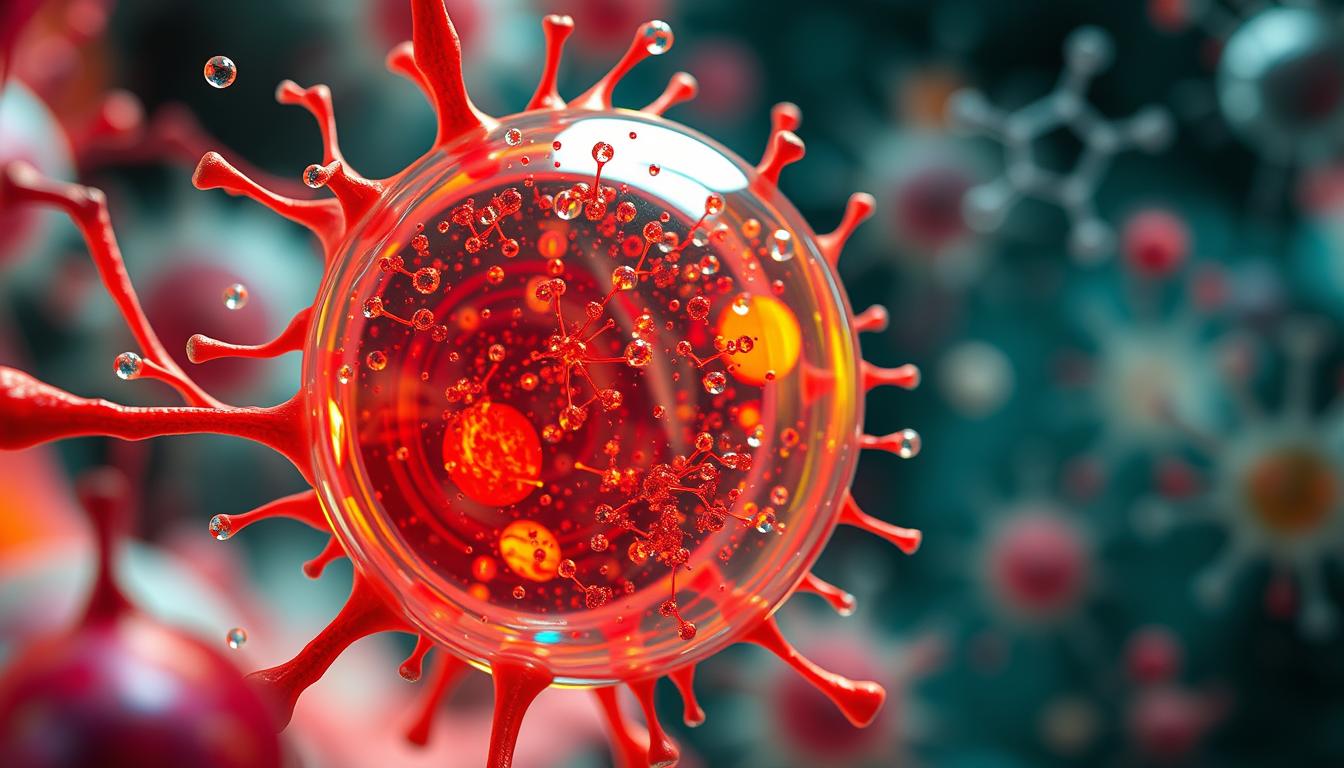Microplastics in human placentas are a big worry, with studies showing they’re becoming more common1. From 60% to 100% of placentas now contain microplastics, showing a clear increase1. You can lower your exposure to microplastics. The Bye Microplastics AI mobile app, available on App Store and Google Play, helps you make choices to reduce pollution.
Research shows microplastics are in every human placenta tested, with polyethylene being the most found2. Finding microplastics in placentas worries about health risks for mothers and babies. It shows we need to tackle microplastic pollution3. Learning about microplastics in placentas helps you take steps to protect yourself and the environment.
Knowing the dangers of microplastic pollution is key. By staying informed, you can lessen your exposure to microplastics in placentas1. The rise of microplastics in placentas is alarming. It’s vital to tackle this issue for a healthier future for all2. By acting and making smart choices, you help reduce pollution and improve our environment3.
Recent Discovery of Microplastics in Human Placenta Raises Global Concerns
The discovery of microplastics in human placenta is a big deal. It shows that plastic can harm the fetus’s growth4. Studies found microplastics in every placenta sample tested, with polyethylene being the most common4.
Microplastics in the placenta can harm the fetus. It can lead to lower birth weights and changes in when the baby is born5. Also, being exposed to microplastics early on can change the reproductive and nervous systems forever5.
To protect the placenta, we need to cut down on microplastic exposure. We can do this by avoiding single-use plastics and picking products with less packaging6. Supporting recycling and waste reduction policies can also help reduce plastic pollution6.
Some important study findings are:
- Polyethylene was the most common plastic found in placental tissue4.
- Microplastics were found in every human artery tested4.
- Being exposed to microplastics can cause health problems like inflammatory bowel disease and colon cancer6.
Understanding Microplastic Pollution in Your Environment
As you go about your daily life, you are likely surrounded by environmental contaminants that can have a significant impact on your health. Microplastic pollution is a big concern worldwide7. It has been found in human placentas, with polyethylene being the most common plastic detected. This is worrying, as it may affect fetal development during prenatal exposure.
The sources of microplastic pollution include plastic bags, bottles, and other products not disposed of properly. Microplastics can enter the human body through ingestion, inhalation, or skin contact. Studies have shown they can damage human cells7. Some key statistics on microplastic pollution include:
- 6 billion tons of plastic are currently in the world7
- 353 million tons of plastic waste were produced in 20197
- Microplastics have been detected in all 10 placenta samples analyzed in one study8
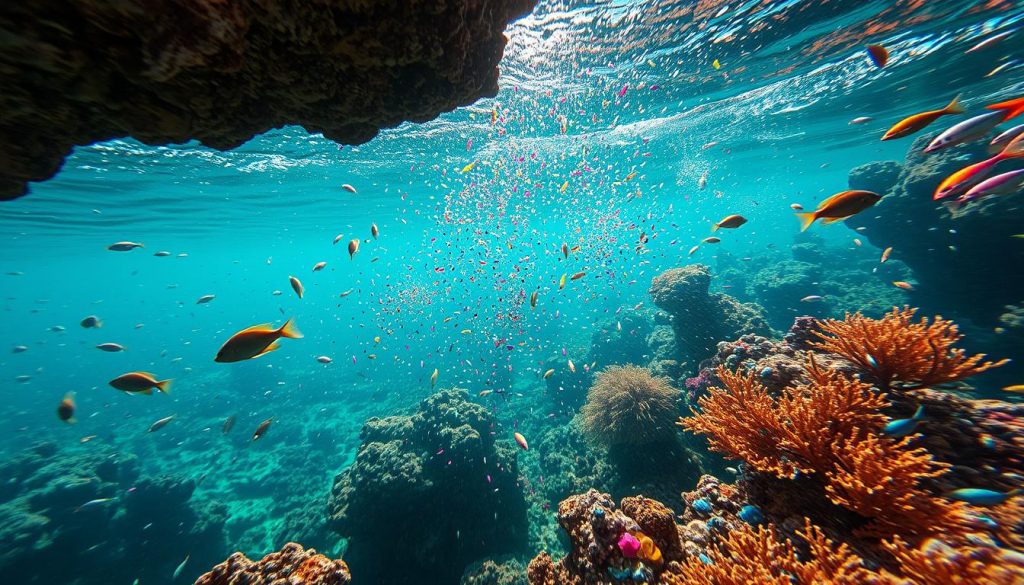
It’s important to understand the impact of microplastic pollution on your environment. By knowing the sources and reducing plastic use, you can lower exposure risks. This helps fight against environmental contaminants and prenatal exposure.
How These Plastic Particles Enter Your Body
Microplastics can get into our bodies in several ways. This includes eating them, breathing them in, and touching them with our skin9. Things like plastic bags, bottles, and other products can be sources of exposure. Activities like eating seafood, drinking bottled water, and using plastic containers also increase our risk.
Exposure to microplastics can harm our health. Studies have shown they can damage human cells10. They have even been found in placentas, posing risks to unborn babies11. Knowing where and how we get exposed is key to reducing risks.
Here are some ways to cut down on microplastic exposure:
- Avoid plastic bags and bottles
- Opt for products with less packaging
- Use glass or stainless steel instead of plastic
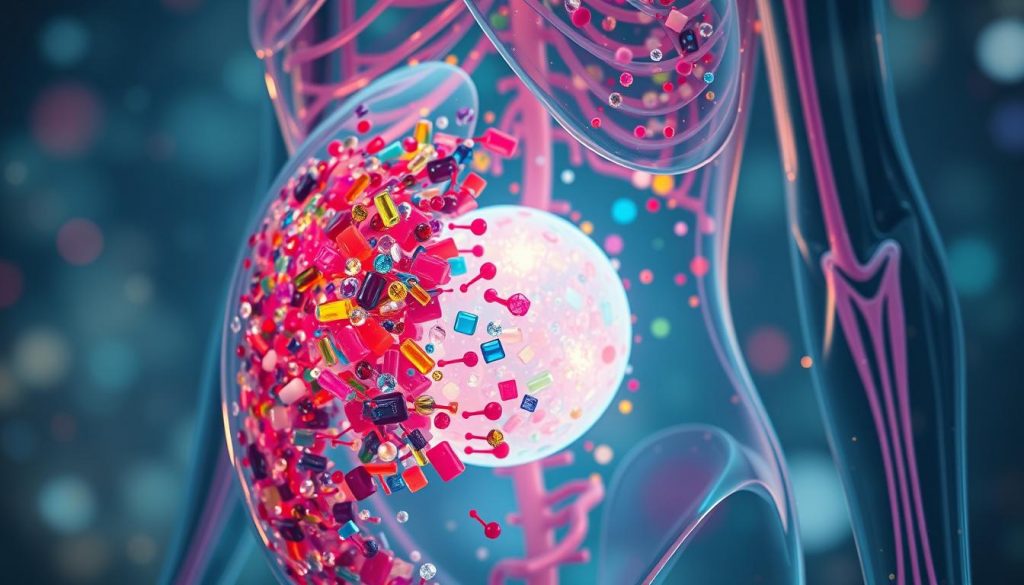
By following these tips, you can lower your exposure to microplastics. This helps avoid health problems, including risks to unborn babies9.
Potential Health Impacts on Fetal Development
Research shows that microplastic pollution can harm human cells in lab tests12. This could affect how a fetus grows and the health of the placenta. The placenta is key for getting oxygen and nutrients to the baby. Microplastics might get through the placenta and harm the baby’s growth12.
Studies found microplastics in human placentas, with an average of 2.7 particles per gram11. The sizes of these microplastics range from 2.1 to 100 micrometers5. This size range is a worry for the baby’s development. Microplastics under 100 μm can easily pass through the placenta and reach the fetus11.
The effects of microplastic pollution on fetal development are a big worry. Pregnant mice exposed to high levels of microplastics gained less weight daily12. Microplastics also caused oxidative stress and harmed the placenta in these mice12. Many studies link microplastic exposure to lower birth weights5.
Understanding the health risks of microplastic pollution on fetal development and placental health is vital. More research is needed to grasp the full impact on human health. By cutting down on microplastic pollution, we can safeguard fetal development and ensure a healthier world for the next generation.
| Microplastic Size Range | Abundance |
|---|---|
| 20–100 μm | 80% of detected microplastics11 |
| 100–200 μm | Predominantly fragments11 |
| >200 μm | Primarily fibers11 |
Prevention Strategies to Reduce Your Exposure
To lower the risks from microplastics, it’s key to use prevention strategies every day. It’s important to cut down on exposure to things like microplastics. This helps avoid health problems, including those that start before birth. Simple changes can greatly reduce your exposure to microplastics.
Start by avoiding plastic bags and bottles. Use reusable containers and pick products with less packaging13. Also, think about the products you use and what they’re made of. For instance, choose clothes made from natural fibers to cut down on microplastic shedding14.
Practical Steps for Daily Life
- Avoid using plastic bags and bottles
- Use reusable containers and bags
- Choose products with minimal packaging
Technology-Based Solutions
Apps like Bye Microplastics AI can help you lower your microplastic exposure. This app gives tips on how to make choices that are better for the planet. It helps you understand how to reduce your microplastic footprint.
| Strategy | Benefits |
|---|---|
| Using reusable containers | Reduces plastic waste and microplastic exposure |
| Choosing products with minimal packaging | Decreases plastic use and minimizes microplastic shedding |
By using these strategies, you can lower your exposure to harmful substances like microplastics. This helps avoid health risks, including those that start before birth13. Remember, every small action helps. Together, we can make a big difference for our environment and health14.
Current Research and Ongoing Studies
Scientists are studying microplastics in human placenta to learn about their health effects15. They found microplastics in the placenta, which worries them about how it might affect babies16. Studies show microplastics are in many body parts, like blood and breast milk12.
Some important research findings are:
- Microplastics were found in human placenta, which is a big worry for baby health15.
- Studies show microplastics can harm male rodents’ reproductive health16.
- High levels of microplastics made pregnant mice lose weight12.
This research shows we need to keep studying microplastics in human placenta151612. As we learn more, we must think about how it could affect our health for a long time151612.
Taking Action for a Healthier Future: Your Next Steps
Microplastics in human placentas are a serious issue we must tackle17. We can all play a part in reducing our exposure to these pollutants. This will help us move towards a healthier future18.
Start by making small changes in your daily life. Try to avoid using single-use plastics like bags, bottles, and straws18. Instead, use reusable items and choose products with less packaging19. The Bye Microplastics AI mobile app can also guide you in reducing your exposure18.
Supporting environmental changes is also important. Back policies and projects that cut down on plastic use and waste18. Push for better recycling and sustainable waste management in your community18.
By joining forces, we can lessen the harm of microplastic pollution. This will protect the health of today’s and tomorrow’s generations19. Taking action now will help us build a cleaner, stronger world for everyone.
FAQ
What are microplastics and how were they discovered in human placenta?
How were the microplastics in placenta analyzed?
What are the key findings of the study on microplastics in human placenta?
What are the sources of microplastic pollution?
How can microplastics enter the human body?
What are the potentially harmful effects of microplastics on fetal development?
How can I reduce my exposure to microplastics?
What is the current research and ongoing studies on microplastics in human placenta?
Source Links
- JABSOM Researchers Discover Rise of Microplastics in Placentas of Hawaiʻi Mothers
- Microplastics Found in Every Human Placenta Tested, Study Finds
- Rise of microplastics discovered in placentas of Hawaiʻi mothers | University of Hawaiʻi System News
- Microplastics found in every human placenta tested in study
- Impact of Microplastics on Pregnancy and Fetal Development: A Systematic Review
- Microplastics in Every Human Placenta, New UNM Health Sciences Research Discovers
- Microplastics are everywhere — we need to understand how they affect human health – Nature Medicine
- Microplastics in placentas: occurrence, sources, and effects | Food Packaging Forum
- Microplastics revealed in the placentas of unborn babies
- Microplastics are in our bodies. Here’s why we don’t know the health risks
- Spectroscopy reveals a high abundance of microplastics in human placenta
- Microplastics caused embryonic growth retardation and placental dysfunction in pregnant mice by activating GRP78/IRE1α/JNK axis induced apoptosis and endoplasmic reticulum stress – Particle and Fibre Toxicology
- Microplastics exposure: implications for human fertility, pregnancy and child health
- How To Protect Your Child From Microplastics – Pure Earth Collection
- Deeply in Plasticenta: Presence of Microplastics in the Intracellular Compartment of Human Placentas
- Frontiers | Microplastics exposure: implications for human fertility, pregnancy and child health
- The Alarming Presence of Microplastics and Plastic in the Human Body – Greenpeace Australia Pacific
- Microplastic sources, formation, toxicity and remediation: a review – Environmental Chemistry Letters
- Parley AIR: Plastics and Women’s Health — Parley
